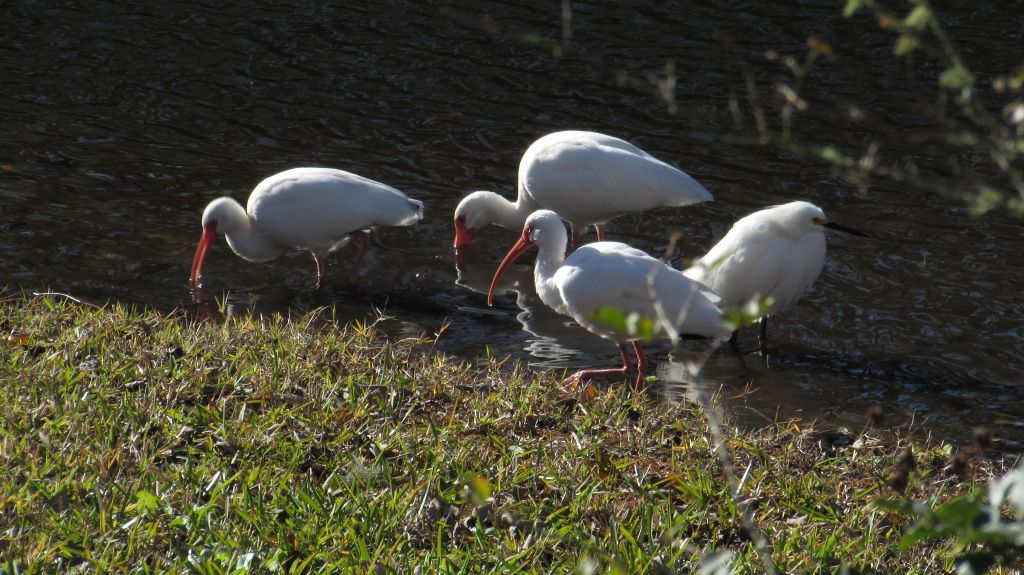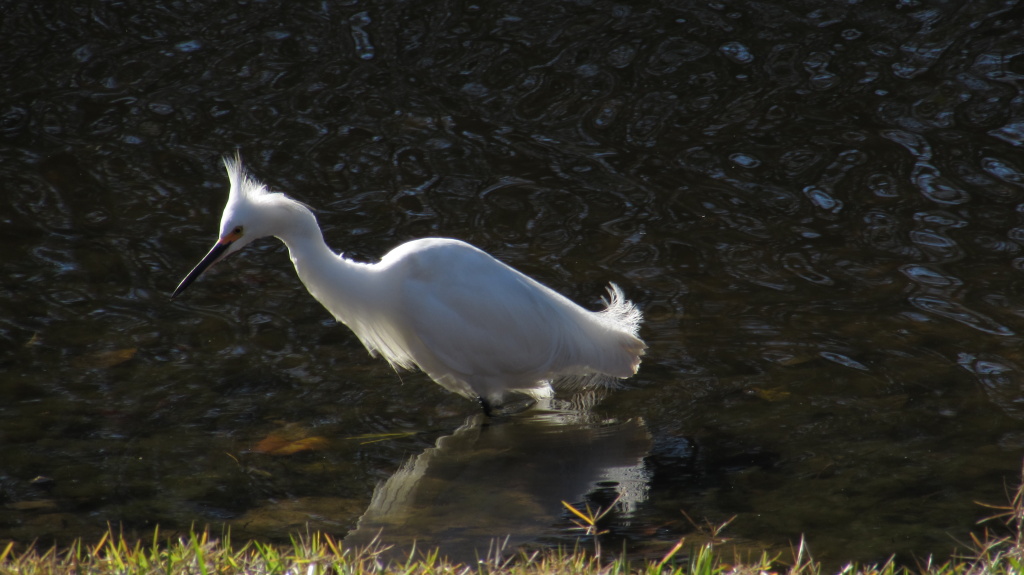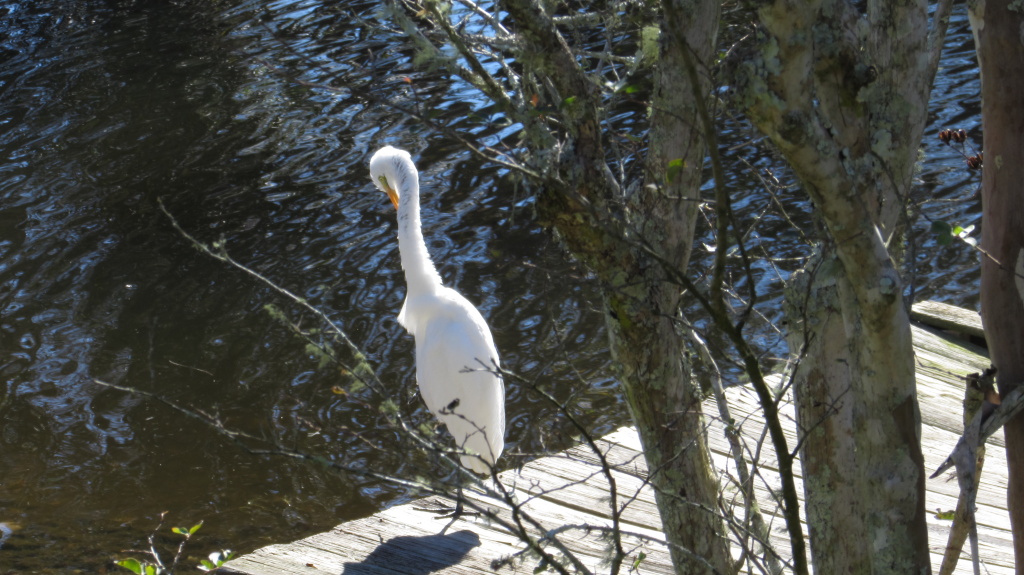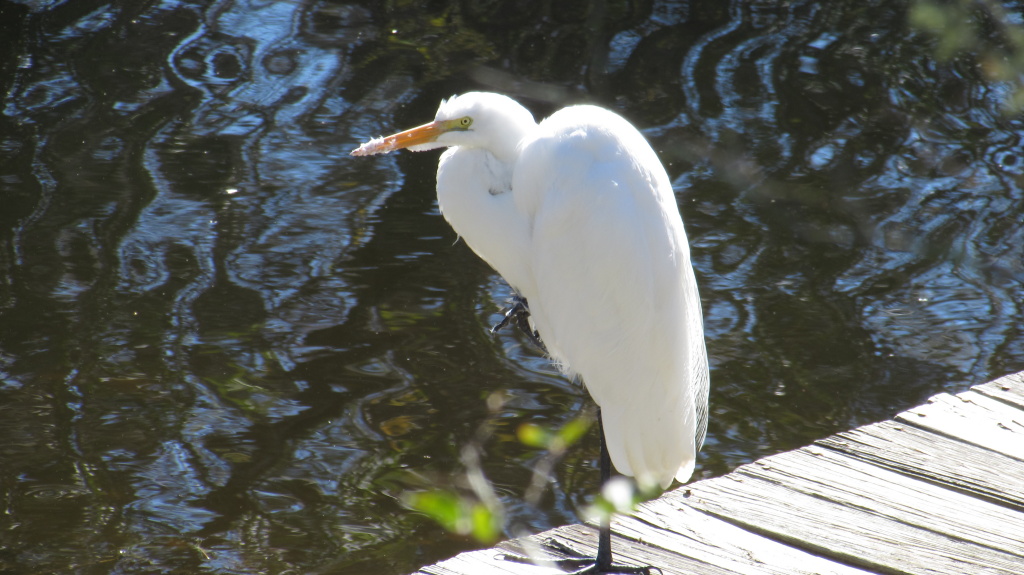Because I’m quite tired.
Blue and I talked about what distinguishes the snowy egret from the great white. It occurs to me that it would be helpful to set that down.
So this is a short post in which I avoid talking about the excitement of the day [otters!] so that I can go to bed and awaken in the morning refreshed and clever and therefore able to render a decipherable account of one of the most fortunate days I’ve had in the backyard.
It is a riveting tale peppered with drama and pathos, enacted in low temperatures, dim light and bracing wind. There are significant players and incidental players with small but important roles [hawk!]. There’s local color [blue!], as well as the uncovering of things ordinarily shrouded in darkness [green heron!]. There’s even a surprise appearance by a newcomer that almost stole the show [gnatcatcher!]. Tomorrow, you’ll get that tale.
Meanwhile, there were three white birds. Though they are difficult to photograph (or for me to photograph with this equipment under these conditions), I like them because they offer some dramatic contrast to the landscape. The three are the ibis, the snowy egret, and the great white heron.

It is very evident who is who here. The three ibises have long curved beaks. They travel in huge flocks, eat-nod their way along the coast and are sometimes accompanied by the great white, who is below. This might be the first occasion I’ve seen them in the company of just the snowy egret, who ignores the on-coming wind as he leaves the group.

The great white is far more wary of my presence than the snowy egret, so I am seldom at a good angle, or distance to take proper photos. This one today was quite accepting though. For a time, he was accompanied by a limpkin, and they both just stood near/on the dock while I walked around trying to get a good shot of this bird.

Appropriately defensive of posture, it reminds me of the old movies where some solicitor in a Dickensian world bunches his imposing shoulders over some underling to correct some errant behavior.

So, finally, the great white is much larger, and therefore has long flowing feathers. It also has a yellow beak and black feet. The snowy egret is about on par with the ibis in the size department, but the latter has a long curved beak, closer to orange in color. The snowy egret’s feet are black and green striped (that I’ve seen), and they have yellow socks.
And that’s all the time we have. Except for this one thing: an eastern phoebe. Just a little extra. (And it turns out I rather like choosing the great white as my featured image, so to give myself some choice, here we go…

Tomorrow for the rest.